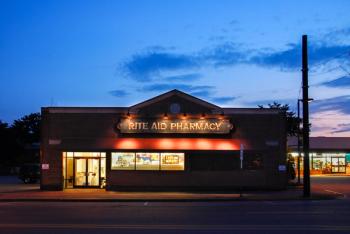
Study: Statin Therapy Safe, Effective in Treating Children With Familial Hypercholesterolemia
The condition is not preventable, but there are steps that can be taken to reduce LDL-C levels in children.
Statin therapy has been proven effective for use in children with familial hypercholesterolemia (FH), according to a review of 10 studies from between 1996 and 2016 published in the Journal of Pediatric Medicine. FH treatment has historically been delayed until children reach adulthood, which may be attributable to hesitancy to prescribe statins in young patients, owing to a lack of knowledge about the use of statins in children.1
The review primarily focused on heterozygous FH, a genetic disorder that affects the metabolism of low-density lipoprotein molecules and can lead to elevated low-density lipoprotein cholesterol (LDC-C) levels in the bloodstream. Approximately 1 in every 250 individuals has this disorder and, if left untreated, it can result in premature health complications such as coronary heart disease and myocardial infarction.1
FH is not preventable, but there are steps that can be taken to reduce LDL-C levels in children. These include dietary changes, increased activity, and pharmacological treatment. Statins are the first pharmacological agent of choice for children with FH, but there are knowledge deficits as to the safety and efficacy of this treatment option.1
According to the review, the results of the 10 studies demonstrated that statin treatment significantly reduces LDL-C level in children and adolescents with heterozygous FH. The study authors noted that the extent of reduction varied between the studies, which they attributed to the use of different statins and dosages across the studies.2
All 10 studies reported on the adverse effects (AEs) experienced by the participants. Potential AEs included elevated liver enzymes, creatine kinase, myopathies, and changes in hormones. Though there were AEs recorded in each study, all studies reported a favorable safety and tolerability profile. Respiratory tract infections were found to be the most common AE reported in 2 of the studies, but there was no clinically significant difference between the rate of respiratory infections between the treatment groups and the placebo groups.2
“Because of the potential long-term health effects of elevated LDL-C level in children, pediatric providers should consider adding statin therapy to diet and exercise measures for this population,” said Angela Nash, PhD, APRN, CPNP-PC, PMHS, in a press release.1
Further research is required to evaluate the safety of statins over the course of a patient’s lifetime when they are initiated at a young age, according to the investigators. Further, they suggest additional studies should investigate the use of other LDL-C lowering agents in combination with statins, as some patients may have LDL-C levels remain elevated even after utilizing the highest dosage of statin monotherapy, which would indicate the necessity of additional pharmacological treatment.2
REFERENCES
- Study Review Reveals Effectiveness of Statin Therapy in Children with Familiar Hypercholesterolemia [news release]. NAPNAP; June 15, 2021. Accessed June 15, 2021.
- Dombalis S, Nash A. The Effect of Statins in Children and Adolescents With Familial Hypercholesterolemia: A Systematic Review. J. Pediatr. Health Care May–June 2021; 292-303; doi: 10.1016/j.pedhc.2020.11.007
Newsletter
Stay informed on drug updates, treatment guidelines, and pharmacy practice trends—subscribe to Pharmacy Times for weekly clinical insights.




















































































































































































































